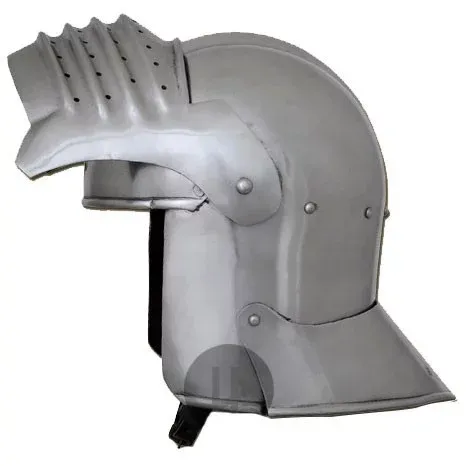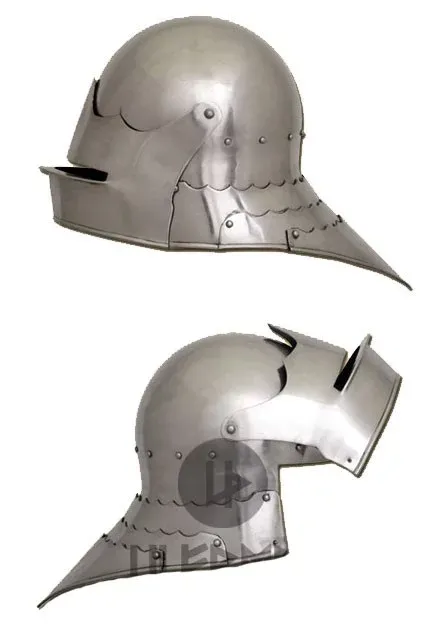What is a Celada?
The helmet is a military helmet used since the early years of the 15th century. Its design represented a significant evolution from earlier helmets, such as the bascinet, and was distinguished from the sallet by its specific characteristics. Aiming to provide more effective and functional protection on the battlefield, the helmet quickly established itself as an essential piece of armor for the fighters of the time.
Origin and Development
The helmet emerged in the region of Germany in the early 15th century, and its popularity quickly spread throughout Europe. It could be part of a complete suit of armor or used as independent head protection. One of the most characteristic elements of its design was the large rear flaps that offered effective protection for the nape, making it an ideal option for both knights and infantry troops.

Characteristics of the Helmet
- Movable Visor: The helmet featured a movable visor that was attached to the sides of the helmet, leaving space for vision. However, this design risked allowing the entry of a spearhead through the opening.
- Articulated Nape Guard: Unlike the bascinet, which used mesh nape guards, the helmet was equipped with articulated steel plates, providing greater protection without restricting movement.
- Variety of Types: There were several types of helmets, including the barbute helmet, the gorget helmet, the infant helmet, the pavilion helmet, the morion helmet, and the Venetian or stradiot helmet.
- Decoration and Ornaments: The helmets of wealthy individuals were often richly decorated, featuring luxurious fittings and sometimes even horsehair padding.
Use in the Context of Warfare
Between 1450 and 1500, helmets became the preferred choice for head protection in combat. Their design, though simple, proved extremely effective, leading to their adoption by both knights and infantry troops. In addition to offering physical protection, the helmet had a significant psychological effect due to its "dehumanized" design, characteristic of mercenary troops.

Historical Examples and Cultural Significance
Historical helmets are prized in museum collections, with designs dating mainly from the late 15th century. Many of these pieces feature perforated visors for improved breathing, combs, and chinstraps. In addition to their use in combat, they are mentioned in historical records as those used by the soldiers of King Alfonso V of Aragon and are represented in bas-reliefs on structures such as the arch in Naples dedicated to this monarch.
Ultimately, the helmet marked a milestone in the evolution of medieval armor, offering a balance between protection and mobility, and became a symbol of both military innovation and social status in its time.
















